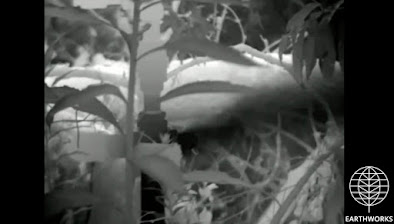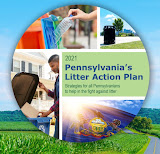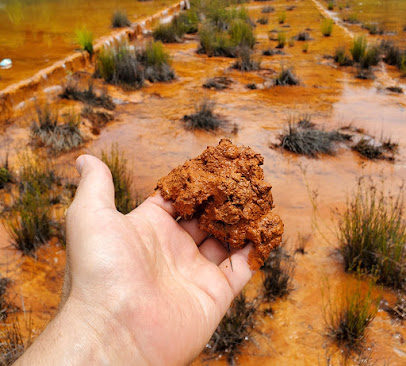The Board also voted 15 to 3 to approve a final regulation adopting a PFOS/PFOA ‘forever chemical’ Maximum Contaminant Limit in drinking water, the first state-developed MCL ever adopted in Pennsylvania.
Conventional Oil & Gas Methane Emission Controls
Part I of the regulation covering unconventional shale gas facilities was already approved by the EQB and by the Independent Regulatory Review Commission, but is opposed by Republicans in the General Assembly. Read more here.
Conventional oil and gas facilities account for 80 percent of methane emissions from the oil and gas industry in Pennsylvania because they have done little or nothing to control them.
The unconventional shale gas industry accounts for 20 percent because they have implemented some controls. Read more here.
The regulation would affect 4,719 conventional well owners of approximately 27,260 facilities.
DEP estimates it will cost the conventional natural gas industry approximately $9.8 million annually to comply with the regulation, but that cost will be offset by preventing $36.4 million of their product not leaking into the atmosphere, at current natural gas prices.
DEP said both parts of the regulation are needed to comply with a mandate from the U.S. Environmental Protection Agency to adopt controls on methane emissions from oil and gas operations by December 16 or face the potential loss of $500 million or more in federal highway funds. Read more here.
EQB Discussion Of Conventional Rule
Representatives of Sen. Gene Yaw (R-Lycoming) and Rep. Daryl Metcalfe (R-Butler), Majority Chairs of the Senate and House Environmental Resources and Energy Committee voted against the regulation.
John St. Clair was the third ‘no’ vote who serves on DEP’s Citizens Advisory Council and works for Rosebud Coal Mining Company.
The alternative for Rep. Metcalfe was again critical of DEP’s delay in finalizing this regulation when DEP knew of the EPA’s oil and gas emission limit requirement starting in 2016.
He did not mention, Rep. Metcalfe has opposed Part I of the regulation covering the unconventional oil and gas industry and voted against Part II of the regulation covering the conventional oil and gas industry..
Krishnan Ramamurthy, Deputy Secretary for Waste, Air, Radiation, and Remediation, said the need to gather information on the previously largely unregulated conventional oil and gas industry air emissions and changing EPA handling of the oil and gas requirement over time, caused much of the delay.
The alternative for Rep. Metcalfe asked how DEP believes this final-omitted regulation complies with Act 52 that requires DEP to develop separate rulemakings covering the conventional oil and gas industry.
DEP again repeated their legal position that Act 52 does not apply to regulations promulgated under the state Air Pollution Control Act like the one before the Board for the vote.
The alternative for Rep. Metcalfe said it is inappropriate to use the final-omitted process to avoid the public comment period on this regulation.
DEP’s Ramamurthy explained again the requirements for both conventional and unconventional oil and gas industry are the same as the regulation when it included both parts of the industry and EPA makes no distinction between the conventional and unconventional industry.
He also noted there was an extensive comment period on the combined regulation so another public comment period was not needed..
Background - Final-Omitted Rulemaking
DEP recommended to the EQB Part II of the regulation covering conventional oil and gas facilities be adopted as a final-omitted regulation in order to meet the December 16 EPA deadline to have Part I and Part II of the regulation in place to avoid federal highway funding sanctions.
A final-omitted regulation starts the process of promulgating a rulemaking over, but avoids the step of going through a proposed stage and another public comment period.
Under the Commonwealth Documents Law an agency may use this procedure if it determines starting from the proposed stage is “impracticable, unnecessary or contrary to the public interest.”
In this case the subject of this rulemaking has already gone through an extensive public comment process with hearings when the provisions were a single proposed regulation covering both conventional and unconventional facilities.
DEP separated the final conventional and unconventional provisions as a result of a review by the Independent Regulatory Review Commission, which approved Part I of the regulation unanimously..
Along with the final-omitted regulation, DEP has provided the EQB with a copy of the comment/response document it prepared to comments submitted when the regulations were combined.
DEP said, “A public comment period is also contrary to the public interest because it will delay the implementation of the VOC RACT requirements in this final-omitted rulemaking, resulting in the Commonwealth being unable to satisfy the December 16, 2022, sanction deadline.
“If the Board were to provide notice of proposed rulemaking, and an additional public comment period and public hearings, the Commonwealth would be unable to submit this rulemaking to the EPA as a SIP revision by December 16, 2022.
“The entire rulemaking process in this Commonwealth takes about two years, sometimes longer, from start to finish, and the concurrent resolution process under the RRA further lengthens that timeline.
“Additional delay of this rulemaking would further harm the public interest because the Commonwealth would lose millions of dollars in Federal highway funding and much needed VOC and methane emission reductions.”
Both the Independent Regulatory Review Commission and the House and Senate still have the opportunity to review the final-omitted rulemaking under the Regulatory Review Act. Read more here.
Click Here for more background on this issue.
PFOS/PFOA MCL Rule
The Environmental Quality Board voted 15 to 3 to approve a final regulation adopting a PFOS/PFOA ‘forever chemical’ Maximum Contaminant Limit in drinking water, the first state-developed MCL ever adopted in Pennsylvania.
Representatives of Sen. Gene Yaw (R-Lycoming) and Rep. Daryl Metcalfe (R-Butler), Majority Chairs of the Senate and House Environmental Resources and Energy Committee voted against the regulation.
Their stated reason for opposition was the cost of compliance with the regulation on public water systems and the belief adopting an MCL should be the responsibility of the federal government.
John St. Clair was the third ‘no’ vote who serves on DEP’s Citizens Advisory Council and works for Rosebud Coal Mining Company.
No significant changes were made in the final regulation from the proposed regulation as a result of public comment.
DEP is not recommending an MCL for other PFAS chemicals at this time due to lack of occurrence data, incomplete cost/benefit data, the lack of a reference dose and the lack of treatability data.
The final MCL for PFOA is proposed at 14 ppt and the MCLG (MCL Goal) at 8 ppt.
The final MCL for PFOS is proposed at 18 ppt and the MCLG (MCL Goal) at 14 ppt.
The current EPA recommended health protection level is 70 ppt, although EPA recently announced a new strategy for dealing with PFAS “forever” chemicals. Read more here.
The final regulation also sets proposed monitoring and sampling requirements.
The regulation would affect about 2,898 water systems in Pennsylvania.
DEP is estimating the regulation will cost water systems an estimated $115.3 million in annual treatment capital and operation and maintenance costs per million gallons per day.
Annual performance monitoring costs would be an estimated $6.2 million.
The regulation is a result of a rulemaking petition submitted by the Delaware RiverKeeper and accepted by the Environmental Quality Board in August of 2017. Read more here.
This is the first state MCL ever developed by DEP. DEP previously just adopted MCLs developed by the U.S. Environmental Protection Agency. In this case, however, EPA did not have an MCL for PFOA/PFOS, but one is in development.
The cost of regulation development to DEP, including a contract with the University of Villanova toxicology services, implementing a water sampling plan across the state and DEP staff costs totaled $1.95 million.
Click Here for more information on this final regulation.
Also Approved
The EQB also unanimously approved the final regulation setting VOC Air Quality RACT requirements for shipbuilding and other operations..
For more information and available handouts, visit the Environmental Quality Board webpage. Questions should be directed to Laura Griffin, laurgriffi@pa.gov, 717-772-3277.


















